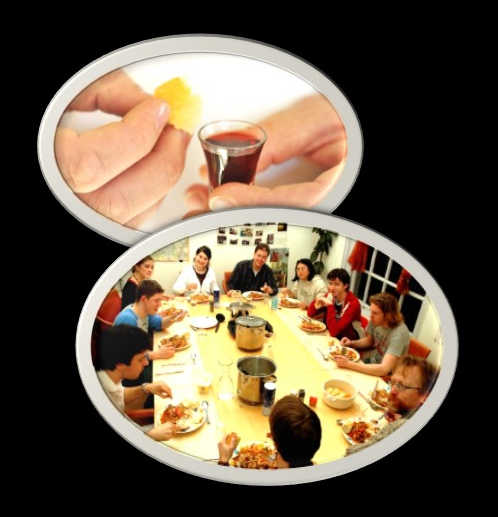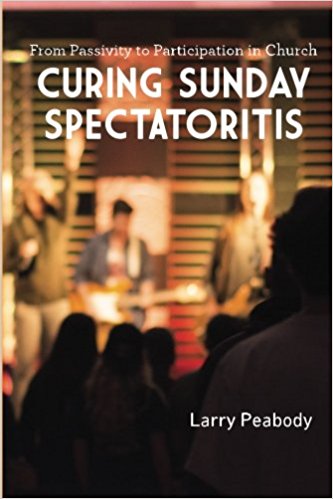Worldview, Workplace, and Faith Formation
It’s no secret that many young Christians are leaving the church. Can a pint-sized worldview help explain why? And does the absence of reports from the scattered church contribute to a stunted worldview?
“A Failure of Faith Formation”
The Colson Center’s Breakpoint Daily recently carried an article by John Stonestreet: “A Failure of Faith Formation: What We Learn from Public Disavowals of Christianity.” Stonestreet opened that piece by noting what Marty Sampson—Hillsong singer and songwriter—had posted about giving up on his Christian faith.
Stonestreet writes: “Sampson’s claims, I’m sad to say, are not uncommon among young evangelicals. And let me just say this as directly and bluntly as I can: they reveal a failure on the part of the church to take the difficult but essential task of faith formation seriously enough. . . . In his book, The Fabric of Faithfulness, Steve Garber wrote that the reason so many young Christians lose their faith is that their worldview isn’t ‘big enough’ for the world.”
Sound Worldview: Essential to Mature Faith
The word “worldview” defines itself; it’s how we view the world. Is the cosmos merely a product of time and chance, or did God create it? Who are we? Why are we on planet earth? Do our years here have any purpose? If so, what is it? And so on. Each of us sees and interprets everything through the lens of our worldview.
So if, as Stonestreet says, young Christ-followers hold an undersized worldview, it can lead them to abandon the faith they grew up with. A faulty worldview, Stonestreet says, comes about when churches don’t “take the difficult but essential task of faith formation seriously enough.”
His reference to faith formation reminded me of a sentence from Eugene Peterson’s Christ Plays in Ten Thousand Places: “I’m prepared to contend that the primary location for spiritual formation is the workplace.”
The workplace? Seriously? Can a job in the nitty-gritty work world function not only as “a” but as “the” main place where Christ-followers mature spiritually? Doesn’t the formation of faith and spiritual growth occur in more favorable settings—church gatherings, prayer meetings, Bible studies, and the like? What makes the workplace such an effective “location for spiritual formation”? Ever since the thorns and thistles of Genesis 3, the joy of working has been mixed with pain. And, as C. S. Lewis puts it in The Problem of Pain, “Pain . . . plants the flag of truth within the fortress of the rebel soul.”
A Firsthand Example
A pivotal story from my own workplace experience may help to clarify. In mid-1964, as a 24-year-old, I took a job in the information office of the Washington State Department of Highways. Before long, my role included serving as the editor of the official state highways magazine. Young and bursting with ideas, I saw story possibilities everywhere. But whenever I went enthusiastically into my boss’s office to propose that I write up this or that in an article, he shot it down. Time after time after time.
I began to feel useless. And restless. After a whole year of this, I began working on a plan to bail out of my state job and to find one more to my liking. But deep inside, I sensed God’s Spirit directing me to stay put. Finally, my internal conflict built to the point that I went into my little office at home, shut the door, and went face down onto the floor before the Lord. In that acute moment, I gave everything over to him: wife, children, house, car, job—and the reins of my own life.
Looking back, I still see that stress-filled workplace as one of the main tools God used to carry out his work of spiritual formation in me. Yes, I knew key Bible passages, had heard countless sermons, and could sing “psalms, hymns, and spiritual songs” galore. All vital. But through that workplace trouble, my faith was put to the acid test. And just as a diamond forms under intense heat and pressure, my faith solidified through those soul-crushing circumstances on the job. (I continued working for the state another 10 years.)
Workplace Faith-Formation in the Bible
Bible people, too, experienced spiritual formation through painful workplace trials. Take David, for example. One of his first work assignments took him into the fields to care for and protect the family’s flock of sheep. Later, his father sent him to check on his brothers who were fighting in an Israelite-Philistine war. When he arrived, David found the Israelite army and king Saul completely flummoxed by the Philistine giant, Goliath, who stood nine-plus feet tall.
After hearing Goliath bellow out his usual threat, David stood before Saul and offered to go himself against the giant. Saul looked at this young son of Jesse and said, “You are only a boy.” To which David replied: "Your servant has been keeping his father's sheep. When a lion or a bear came and carried off a sheep from the flock, I went after it, struck it and rescued the sheep from its mouth. When it turned on me, I seized it by its hair, struck it and killed it. Your servant has killed both the lion and the bear; this uncircumcised Philistine will be like one of them, because he has defied the armies of the living God. The Lord who delivered me from the paw of the lion and the paw of the bear will deliver me from the hand of this Philistine" (I Sam. 17:34-37).
Where had David’s faith formed to the point where he trusted in God’s ability to deliver him? In his workplace. But he is not the only Bible character whose work shaped his faith. Think of Shadrach, Meshach, and Abednego—those Jews with government jobs in pagan Babylon whose boss ordered them to bow down to his own golden image. Talk about pressure! But imagine the spiritual formation that surely took place in them after God delivered them from the flames of a superheated furnace.
Or think of Nehemiah, whose job involved sampling the king’s wine to make certain no one had poisoned it. How his faith must have grown after he, standing before his boss and praying silently, saw God provide—far more than he could have imagined—for rebuilding the wall around Jerusalem. Again, think of Joseph and the pain he endured in his work as a household manager and as prison trustee. But much later he named his second son Ephraim, because, “God has made me fruitful in the land of my suffering” (Gen. 41:52). An expanded worldview. A faith more fully formed. In the workplace.
The Blindfold of the Sacred-Secular Divide
Sadly, though, our church traditions have short-changed the worldviews of far too many Christians. So much so that we find it nearly impossible to see any spiritual-formation value in those places most people work. The completely unbiblical division between what we consider “sacred” and what we call “secular” has obscured the faith-forming power of daily work. Does such myopic vision prevent us from hearing in our Sunday meetings what God has been doing weekdays in the workplace?
Shared Church Includes:
Recognizing that those from the scattered church, as well as the pastor, have significant things to share—words God can use in forming us spiritually.
Making space in gathered church meetings for spiritual-formation stories from the scattered church, including its workplaces.
Helping our young people expand their worldview by hearing reports from the whole church, gathered and scattered.










































